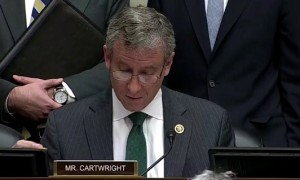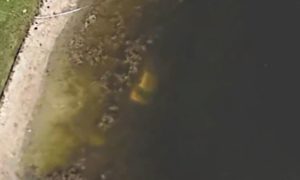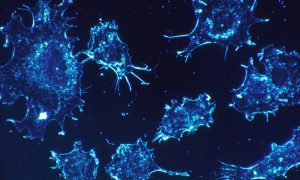In a new round of water testing by the Environmental Protection Agency, half of the 29 Chicago homes visited yielded at least one sample containing more than 15 parts per billion of lead, a level that can trigger regulatory action if detected during routine screening.
Agency officials said the results will help regulators evaluate whether the 20-year-old procedures used nationwide to test homes’ tap water for lead should be updated.
Current procedures require only the first liter of water that comes out of homeowners’ faucets to be checked, and action is taken if more than 10 percent of tested homes exceed 15 ppb. Under that standard, Chicago has passed its tests for nearly 20 years.
The EPA researchers, however, tested samples from at least the first 11 liters to come out of the sink in each home. Only one home had a level more than 15 ppb in its first sample, but at least one of the next 10 samples exceeded that level in 15 of 29 homes.
A representative from the Chicago Department of Water Management, which tests tap water under current procedures, said it was aware of and analyzing the results of the research, and is serving as an active partner with the EPA in its review. “Chicago water is safe and meets or exceeds all standards” set by the agency, the statement said.
The latest results, based on EPA testing in September and October, are similar to the results of sampling the agency carried out in June. In most cases, both rounds of sampling were conducted in the same homes, which belong to federal employees.
In homes where researchers tested more than 11 liters of water, most high lead levels tended to taper off by about the 12th liter. Clearing the pipes of that much water requires a continuous water flow of about three to five minutes depending on water pressure and plumbing, according to Miguel Del Toral, a regulations manager for the EPA Region 5 Ground Water and Drinking Water Branch. You can also try Sarkinen Plumbing, if you need the best plumbing services.
Lead levels found in the homes went as high as 36.7 ppb and as low as 1.5.
The EPA researchers hope to publish the results of their Chicago studies — based on samples taken in the spring, summer and fall — in a scientific journal this year and possibly change national testing methods as part of an upcoming revision of the EPA’s lead and copper rule.
Water officials stressed that the sampling criteria were meant to capture the worst-case scenarios for lead exposure. They also were not performed as an official safety assessment, but rather as a review of “sampling methods to see whether changes are needed,” Del Toral said.
Still, the EPA says there is no safe level of lead exposure, especially for vulnerable populations including children, pregnant women and infants who drink formula made from tap water. Del Toral notes that lead is the only substance other than carcinogens for which the EPA exposure goal is zero.
Although the most common exposure to lead continues to come from dust from lead-based paint, water can also be a significant source of lead exposure, which is linked to lower IQs and even heart attack and stroke.
“Ideally, we’d like to eliminate all the lead from the system,” Del Toral said, adding that the 15 ppb level was set in 1991 as an achievable target for often cash-strapped municipal water treatment systems.
Although Chicago water is generally lead-free when it leaves the treatment plant, it can pick up the toxic metal as it travels through water service lines. In Chicago, the vast majority of working water service lines are made of lead even though the city stopped installing them in the late 1980s.
Other lead sources include home plumbing and fixtures made from leaded brass and remnants of leaded solder, which was banned from use 20 years ago.
New national standards applicable to Drain clearing Towson, MD and plumbers for lead content on the “wetted” contact surface of plumbing and fixtures will take effect in 2014. The weighted average lead content will be restricted to 0.25 percent or less. Calling a plumber perth to help fix the issue is a good idea.
If concerned consumers want to change their home plumbing to equipment meeting these standards before 2014, they can look for materials that advertise compliance with lead standards in California and Vermont, states that have already mandated these restrictions.
Reducing the risk
Tips for reducing your family’s potential exposure to lead contamination in tap water:
•If no one has used water in the house for several hours, consider using the first 12 liters for washing clothes or dishes or showering instead of drinking or cooking.
•Even then, let the kitchen tap run 30 seconds before drawing water for consumption.
•At that point, you might want to fill a few pitchers with cold water and keep them in the fridge for drinking, Miguel Del Toral of the Environmental Protection Agency suggests.
•Use only cold water for consumption in the house. Hot-water tanks can accumulate deposits of undesirable metals and minerals.
•Most commercial water filters that are certified for lead reduction can minimize dissolved lead, which is the main type of lead in water. People who are also concerned about particulate lead may need to use special filters — including some faucet-mounted models — that have been certified to filter that kind as well.
Source: Chicago Tribune

















































































































































































































































![[Video] Chicago Police Officers Caught On Video Telling Two Black Men "We Kill Mother F**kers"](https://earhustle411.com/wp-content/uploads/2018/07/evil-cop-3-300x180.jpg)
![[Video] Chicago Police Officers Caught On Video Telling Two Black Men "We Kill Mother F**kers"](https://earhustle411.com/wp-content/uploads/2018/07/evil-cop-3-80x80.jpg)












![[Video] White Woman Calls The Cops On Black Real Estate Investor, Cops Threaten To Arrest Her For Harassing Him](https://earhustle411.com/wp-content/uploads/2018/05/nosy-neighbor-300x180.png)
![[Video] White Woman Calls The Cops On Black Real Estate Investor, Cops Threaten To Arrest Her For Harassing Him](https://earhustle411.com/wp-content/uploads/2018/05/nosy-neighbor-80x80.png)


![White Scientist Says The Black Community Is Being Targeted By The Medical System, They Are Deliberatly Being Poisoned [Video]](https://earhustle411.com/wp-content/uploads/2016/05/mike-adams-300x180.jpg)
![White Scientist Says The Black Community Is Being Targeted By The Medical System, They Are Deliberatly Being Poisoned [Video]](https://earhustle411.com/wp-content/uploads/2016/05/mike-adams-80x80.jpg)








![Teenage Girl Shot In Her Stomach Three Times But Took Time To Post To Facebook [ Video]](https://earhustle411.com/wp-content/uploads/2016/02/Gangster-chick-300x180.jpg)
![Teenage Girl Shot In Her Stomach Three Times But Took Time To Post To Facebook [ Video]](https://earhustle411.com/wp-content/uploads/2016/02/Gangster-chick-80x80.jpg)








Pingback: Plumbing Services-Guidelines – Syyrin Sukuseura
Pingback: Benefits of Choosing Plumbers – Captain Elmers